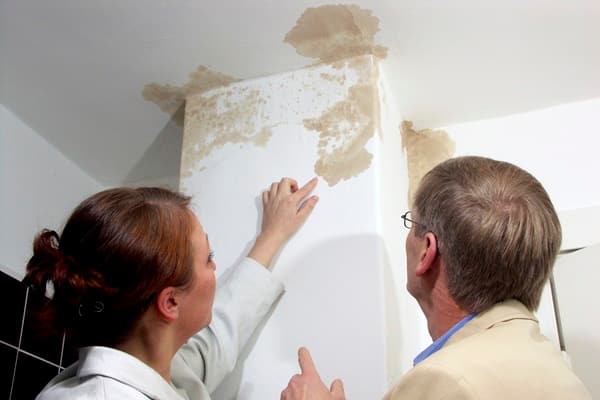Bussiness
Everyday contaminants that may harm your family’s health – London Business News | Londonlovesbusiness.com

Home is considered to be your safest haven. However, it can harbor hidden threats to one’s health from everyday germs and contaminants. Living areas can be filled with potentially harmful substances that are often neglected. These may range from the air we breathe to the products we utilise.
According to an article published on CNN, a quarter of people in the US live with polluted air. The actual number is around 119 million residents. These people face the risk of serious health issues due to exposure to everyday pollutants. The worst part is that the exposure may happen at home.
These pollutants include volatile organic compounds (VOCs) in paints and furnishings, PFAS in cookware and carpets, and even toxic substances in personal care products. These contaminants are common in modern households and can pose significant health concerns. They can especially affect vulnerable groups like kids and the elderly.
In this article, we will pinpoint some common household contaminants. Also, we will discuss their origin and strategies to mitigate exposure and safeguard your family’s health.
Indoor air pollutants
The Environmental Protection Agency states that Americans spend 90% of their time indoors. Unfortunately, the concentration of some pollutants indoors is 2-5 times higher than outdoors. Just breathing indoors can make you sick, no matter how clean your living space appears.
Significant health concerns are associated with indoor air pollution. Pollen, dust mites, and pet dander can aggravate respiratory conditions like asthma and cause allergies. These allergens are often found in carpets, mattresses, and upholstered furniture.
Houses with wet areas promote mold and mildew growth, which can lead to adverse reactions and respiratory issues. Volatile Organic Compounds (VOCs) released from cleaning products, paints, and air fresheners can hamper indoor air quality.
Adequate ventilation, frequent cleaning, and the use of low-VOC products can help decrease exposure to these common indoor air pollutants.
Contaminated drinking water
According to the Guardian, millions of Americans drink contaminated water. Data shows that 26 million people in the US drink water laced with dangerous contaminants.
Forever chemicals, per- and polyfluoroalkyl substances (PFAS), are perhaps the most dangerous culprit. These are the same contaminants found in firefighting foam, known for causing cancer among firefighters. The ongoing AFFF lawsuit highlights the danger these chemicals pose.
TruLaw notes that firefighting foam lawsuits are more than a legal issue. They also represent an environmental concern, with PFAS disposal practices leading to the contamination of water supplies. Areas near airports and military facilities are high-risk zones as AFFF firefighting foam is used here for extinguishing flames.
Additionally, old plumbing systems can leach lead and other heavy metals into water supplies. This can cause developmental disabilities in children and various health issues in adults.
Pesticides and other chemicals may enter into water sources through industrial waste and agricultural runoff. This can potentially lead to prolonged health effects. Microbial contaminants like bacteria and viruses can proliferate in untreated or inadequately filtered water.
Using water filtration systems, frequently checking your water supply, and being informed about local water quality reports can help. If you suspect contamination, talk to your local health authorities for assistance on safe water consumption.
Food contaminants
Contamination in food can significantly pose health risks, particularly in daily-use products. Pesticide residues from non-organic produce can build up in the body, potentially causing numerous health issues.
According to Harvard University, processed foods often contain harmful additives like artificial coloring and preservatives. These have been linked with long-term health conditions such as diabetes, heart disease, and obesity.
Also, the presence of heavy metals in commercial baby foods is a rising concern. Lead, arsenic, and mercury are discovered in many popular brands. These toxins can negatively impact the development of the brain in infants and young children.
Some precautions can limit the exposure to food contaminants. Wash produce thoroughly and choose organic alternatives when possible. Additionally, limit processed foods, and consider homemade baby food options or carefully chosen commercial options.
Plastics and BPA exposure
Plastic bottles and containers can produce toxic compounds in food and beverages, particularly when heated. A number of variables, including acidity, temperature, and length of storage, increase this leaching. Bisphenol A (BPA) is a commonly found chemical in food packaging. It has raised serious health concerns.
BPA can be transferred from the containers into drinks and food. This can expose people to higher levels of BPA. Researchers have linked BPA to various health issues, such as cardiovascular disease, diabetes, and high blood pressure. It can also harm fetuses and affect the brain development of children.
The FDA states that current BPA exposure levels are in the safe range. However, other regulatory bodies have taken stringent measures, such as banning BPA in baby bottles. Consumers can opt for BPA-free products, use glass or stainless steel containers, and refrain from heating food in plastic containers.
Household pesticides
Families may get exposed to serious health risks from chemical pesticides which are used to control rodents and insects. These products often have toxic materials that can linger in the home environment. These can potentially cause respiratory disorders, skin irritation, and more serious health problems with prolonged exposure.
You can think of safer alternatives for pest control to reduce these risks. Natural methods such as diatomaceous earth for insect control, or ultrasonic devices for rodent deterrence can be effective.
Organic options like neem oil or essential oil-based repellents offer less hazardous alternatives. Additionally, you can avoid using dangerous chemicals to prevent pest infestation by keeping your house clean, sealing entry points, and eliminating food sources.
Frequently Asked Questions (FAQs)
Is organic food really healthy, or is it just a part of the marketing strategy?
Organic foods generally consist of fewer pesticide residues and are produced without synthetic fertilizers or GMOs. Selecting organic food can decrease exposure to potentially harmful chemicals, especially for frequently consumed items. The amount of nutrition may be similar to that of conventional produce.
How frequently should I test the drinking water in my home?
It is recommended to go for yearly testing if you have a private well. Moreover, review your local water quality report once a year for public water systems. Further testing is required If you notice alterations in odor, color, and taste or after major plumbing work.
Do any safe plastics exist for heating and food storage?
No plastic product is entirely safe. However, there are some options that are better than others. You can look for plastics labeled BPA-free and refrain from heating food in plastic containers. Plastics with recycling codes 2, 4, and 5 are thought to be safer. The safest materials for heating and storing food are glass, stainless steel, or ceramic containers.
Everyday pollutants in our homes pose serious health risks that often go unnoticed. The above-discussed substances can impact our family’s well-being. Therefore, incorporating safer practices helps you significantly reduce exposure to these hazards. This includes increasing ventilation, using water purifiers, selecting organic produce, going for safer cleaning products, and opting for BPA-free containers.
Making informed decisions about the products and being mindful of potential sources of contamination are key ways to create a healthier living environment. Ultimately, knowledge and proactive steps are essential to safeguard your family’s health against these common daily pollutants.










